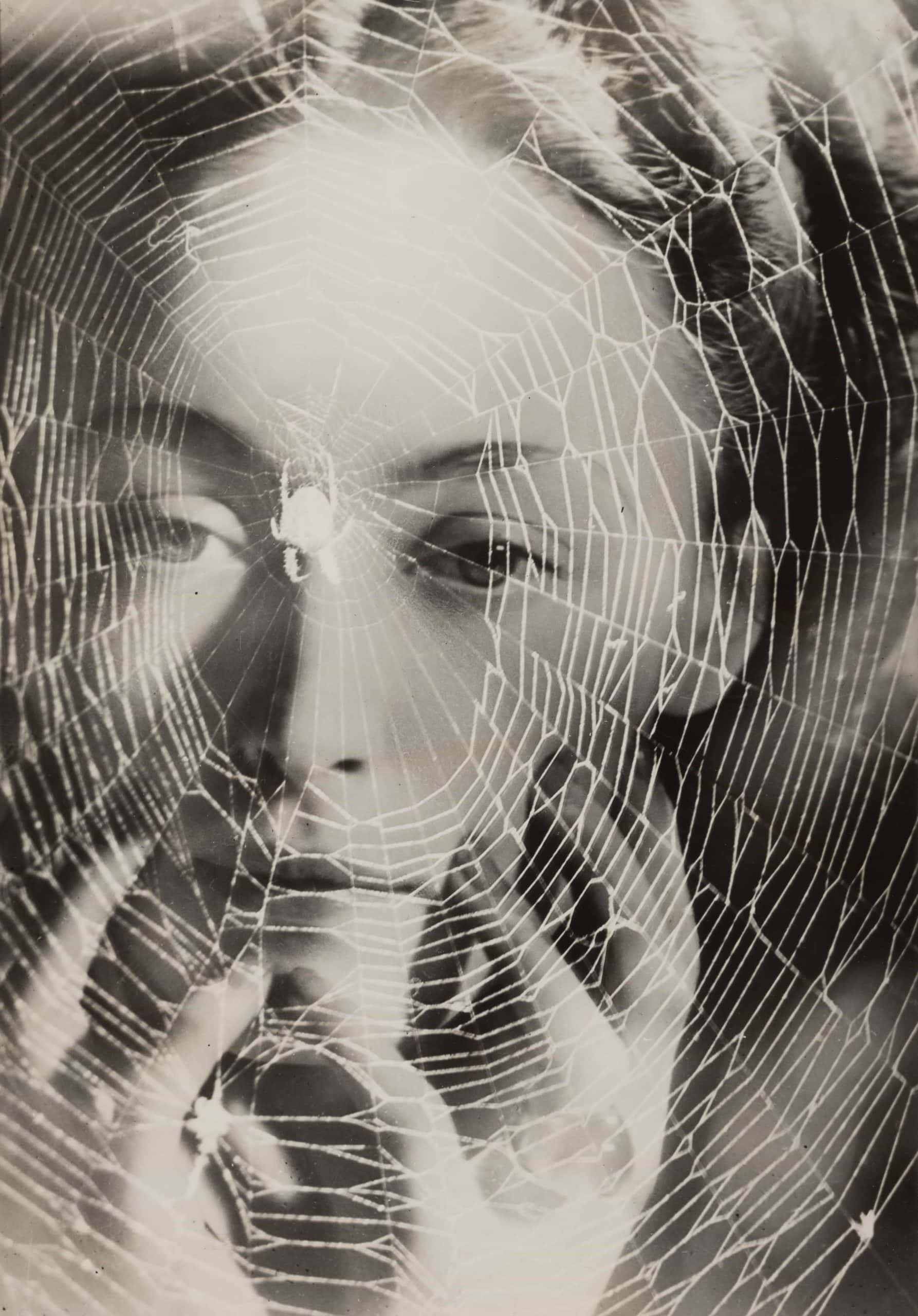

Dora Maar, 1907-1997, Untitled (Fashion photograph) c. 1935, Photograph, gelatin silver print on paper, 300 x 200 mm, Collection Therond. © ADAGP, Paris and DACS, London 2019
That’s why one of the most striking things about some of Dora Maar’s work at the Tate Modern is the extent to which it was designed for a context other than display in galleries and museums. Much of Maar’s most striking, surreal work, featuring fragmented bodies and strange contrasts, came from her career working in photography for advertising.
These photos of models exist in a kind of non-place, not quite as concrete as a studio, and with backdrops including elaborate gates and candles. This creates the kind of strange, dreamlike feeling that’s so often associated with surrealism. Here, on the walls of the Tate, they’re taken out of their original context, and reckoned with anew.
There are large shadows, fragments of bodies; in a 1936 fashion photograph – which, like much of Maar’s work, is simply called ‘untitled’ – a glamorous model is underwater in a swimming pool, with a noir style that predates the iconic opening of Sunset Boulevard by over a decade.
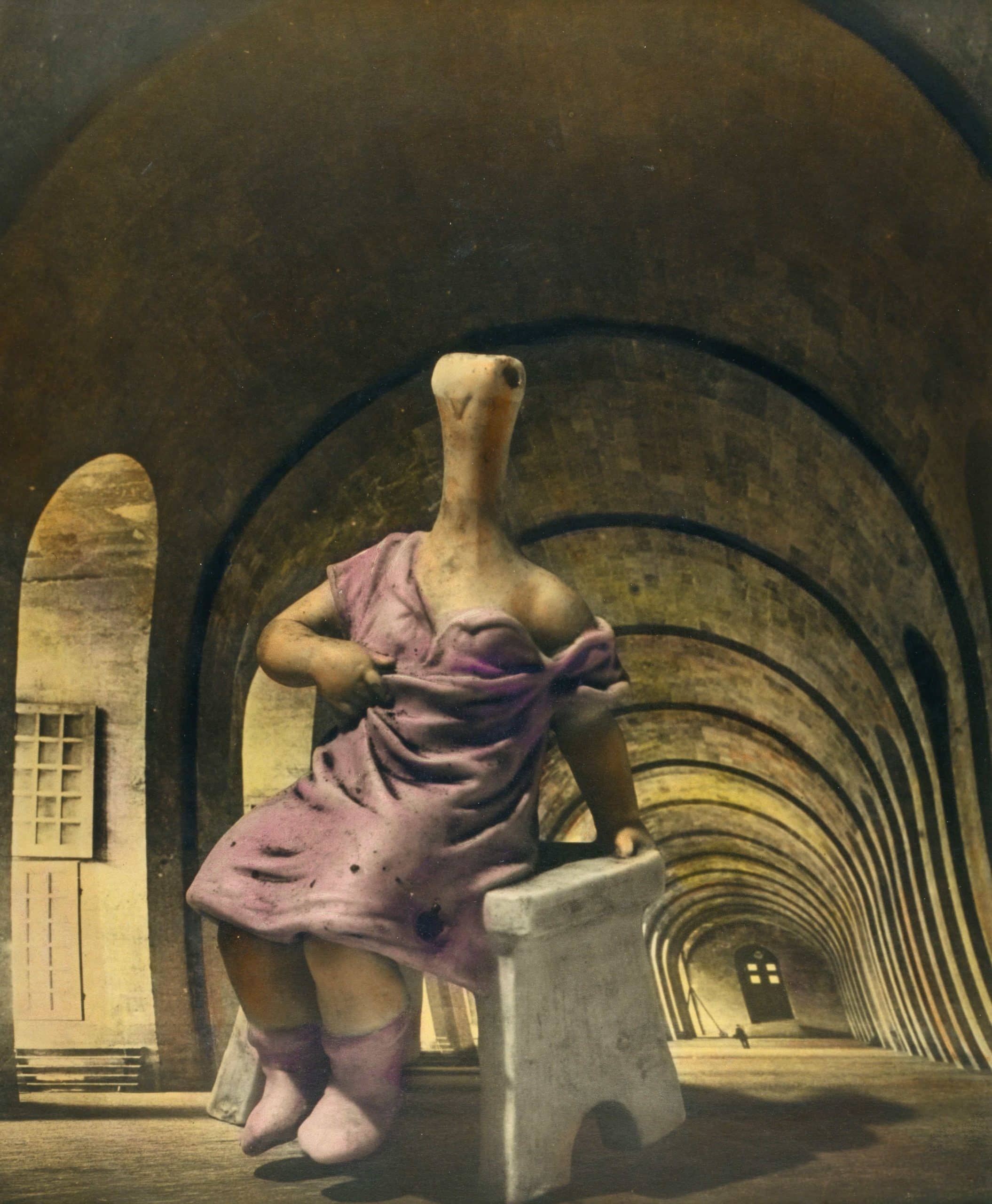
Dora Maar, 1907-1997, 29 rue d’Astorg c.1936, Photograph, hand-coloured gelatin silver print on paper, 294 x 244 mm, Collection Centre Pompidou, Paris. Musée national d’art moderne Centre de création industrielle, Photo © Centre Pompidou, MNAM-CCI / P. Migeat / Dist. RMN-GP. © ADAGP, Paris and DACS, London 2019
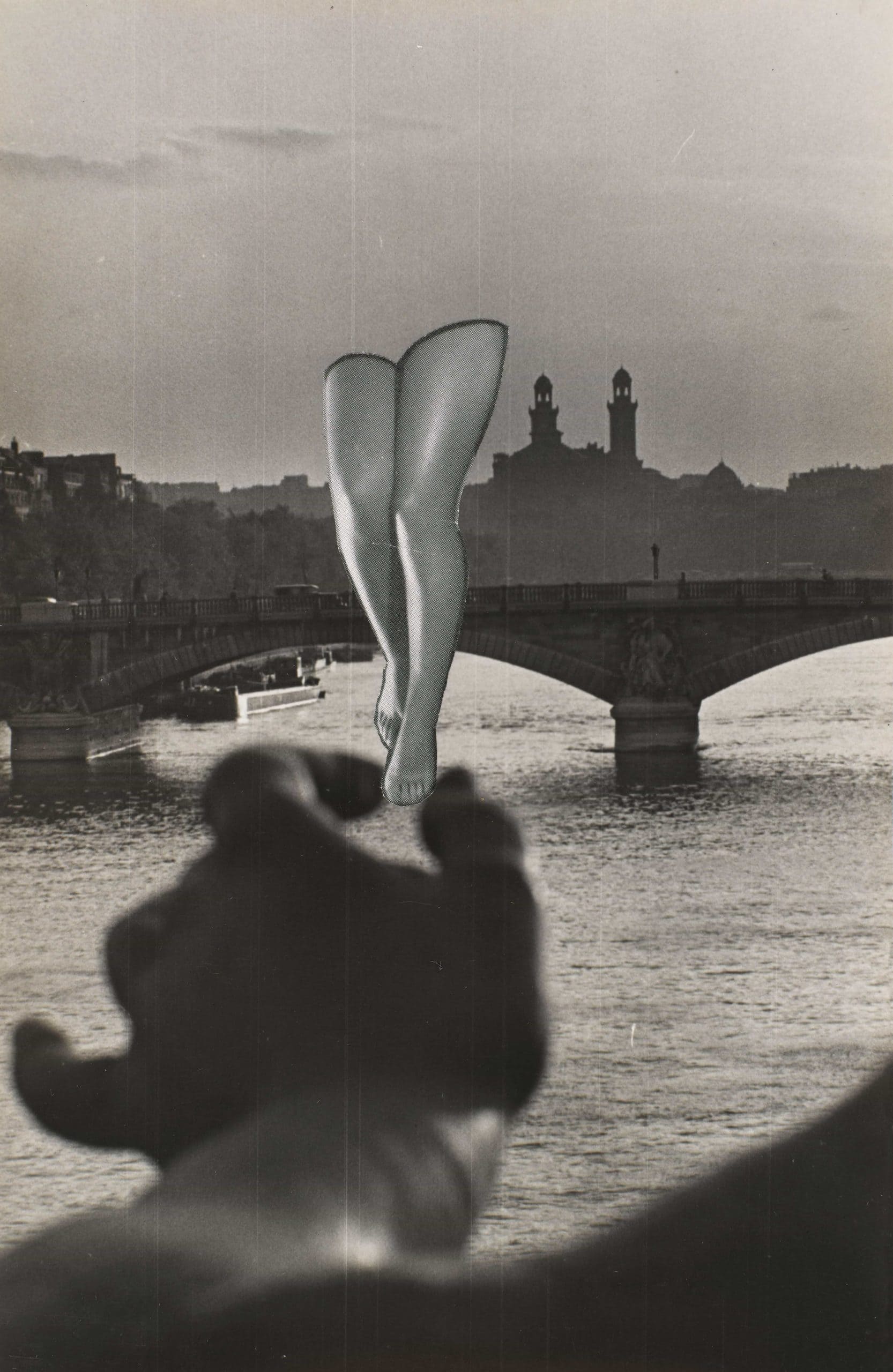
Dora Maar, 1907-1997, Untitled 1935, Photomontage, 232 x 150 mm, Photo © Centre Pompidou, MNAM-CCI / P. Migeat / Dist. RMN-GP. © ADAGP, Paris and DACS, London 2019
Another ‘untitled’ fashion image features the body of a woman, but her face has been replaced with a star, dehumanising the model and instead making her stand for something – that elusive, fleeting idea of stardom. Perhaps because they’ve been given a new context, these fashion images feel more like critiques and satires of their industry as much as anything else.
A knowing nod and wink informs much of Maar’s work. One of the few female surrealists, Maar’s work around femininity, bodies, and the gaze, is embedded with an interesting dimension of otherness.
Of course, the exhibition includes work by Picasso, and portraits of Maar by him, as well as photographs by Man Ray, featuring throughout. Maar’s (in)visibility in the surrealist movement is something that this exhibition often seems to be dealing with.
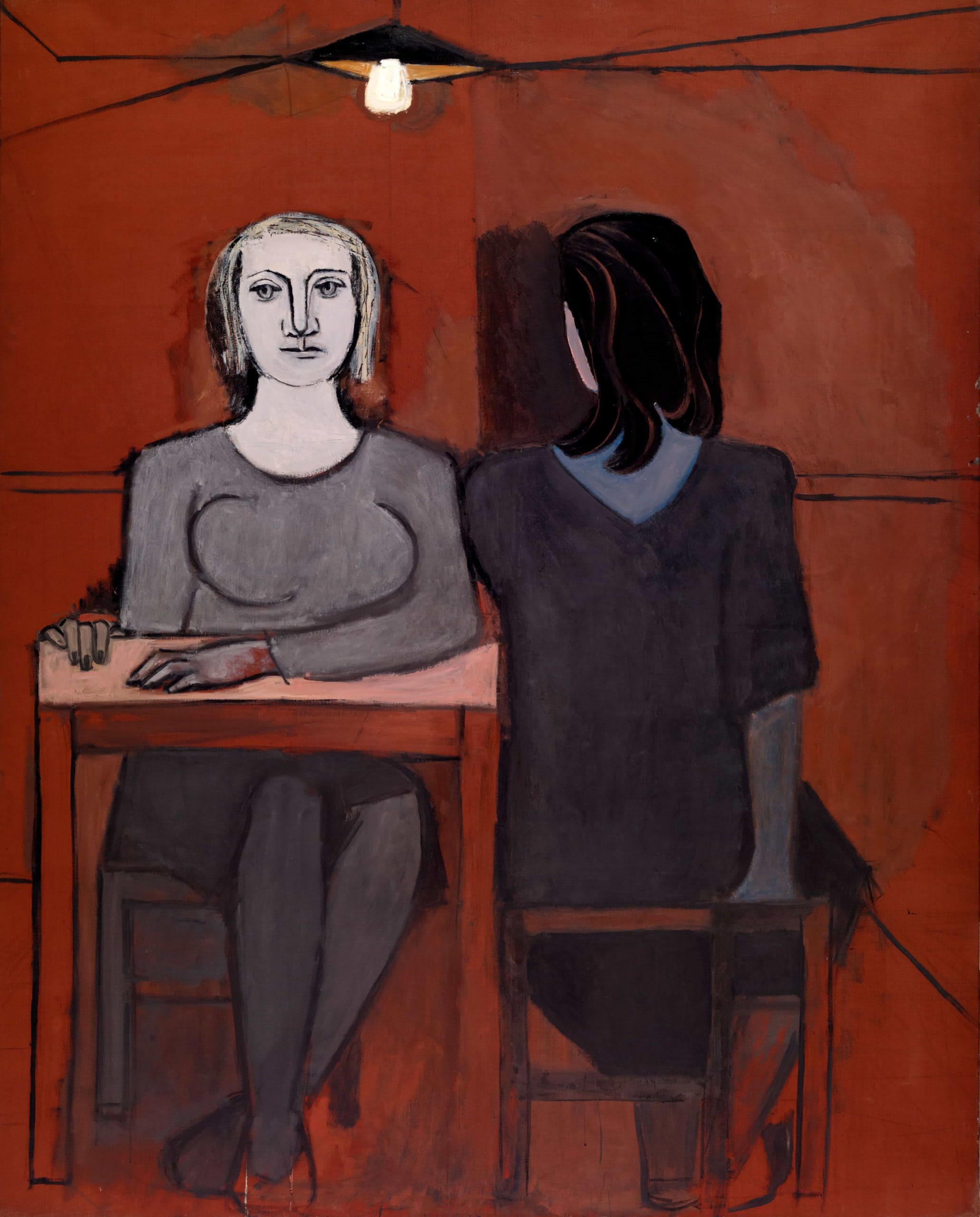
Dora Maar, 1907-1997, The Conversation 1937, Oil on canvas, 162 x 130 cm, Fundación Almine y Bernard Ruiz-Picasso para el Arte, Madrid ©FABA Photo : Marc Domage. © ADAGP, Paris and DACS, London 2019
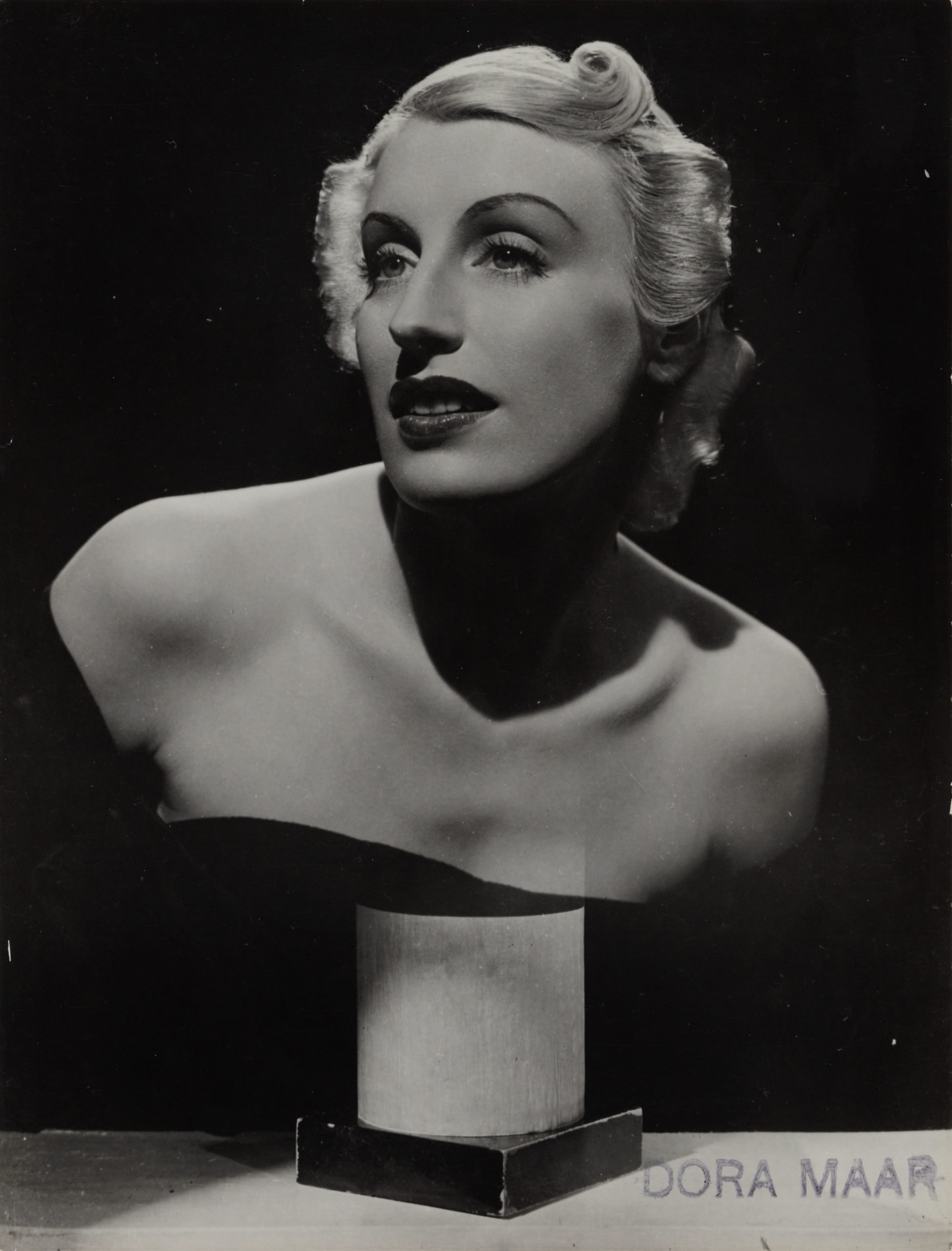
Dora Maar, 1907-1997, Untitled c. 1933, Photograph, gelatin silver print, 240 x 183 mm, Harvard Art Museums/Fogg Museum, Richard and Ronay Menschel Fund for the Acquisition of Photographs. © ADAGP, Paris and DACS, London 2019
Her collages and photomontages also flirt with the idea of female invisibility, and the manipulation of the female form. From the 1936 ‘untitled’ piece featuring a disembodied pair of legs, held by a male pair of hands, to the 1935 Grotesque – a zoom-in on a female mouth, creating the kind of strange, almost inhuman perspective that would appear later in different forms, including in Beckett’s short play Not I. Much of Maar’s work seems to echo through the decades of all kinds of art, from Beckett and Cindy Sherman, to Monty Python.
There’s more to Maar than surrealism, and one of the most commendable things about this retrospective are the ways in which it captures her multitudes as an individual and an artist. There’s a room of political work from the 1930s and 40s, documentary photography that captures Paris in a dark time, and the turning point of European history in the run-up to the Second World War.
The tension between the everyday and the dreamlike exists throughout Maar’s work, and much of her power as an artist comes from an ability to use both simultaneously; the empty and dilapidated streets placed alongside strange perspectives in photography like Untitled (mannequins in a window) from 1935.
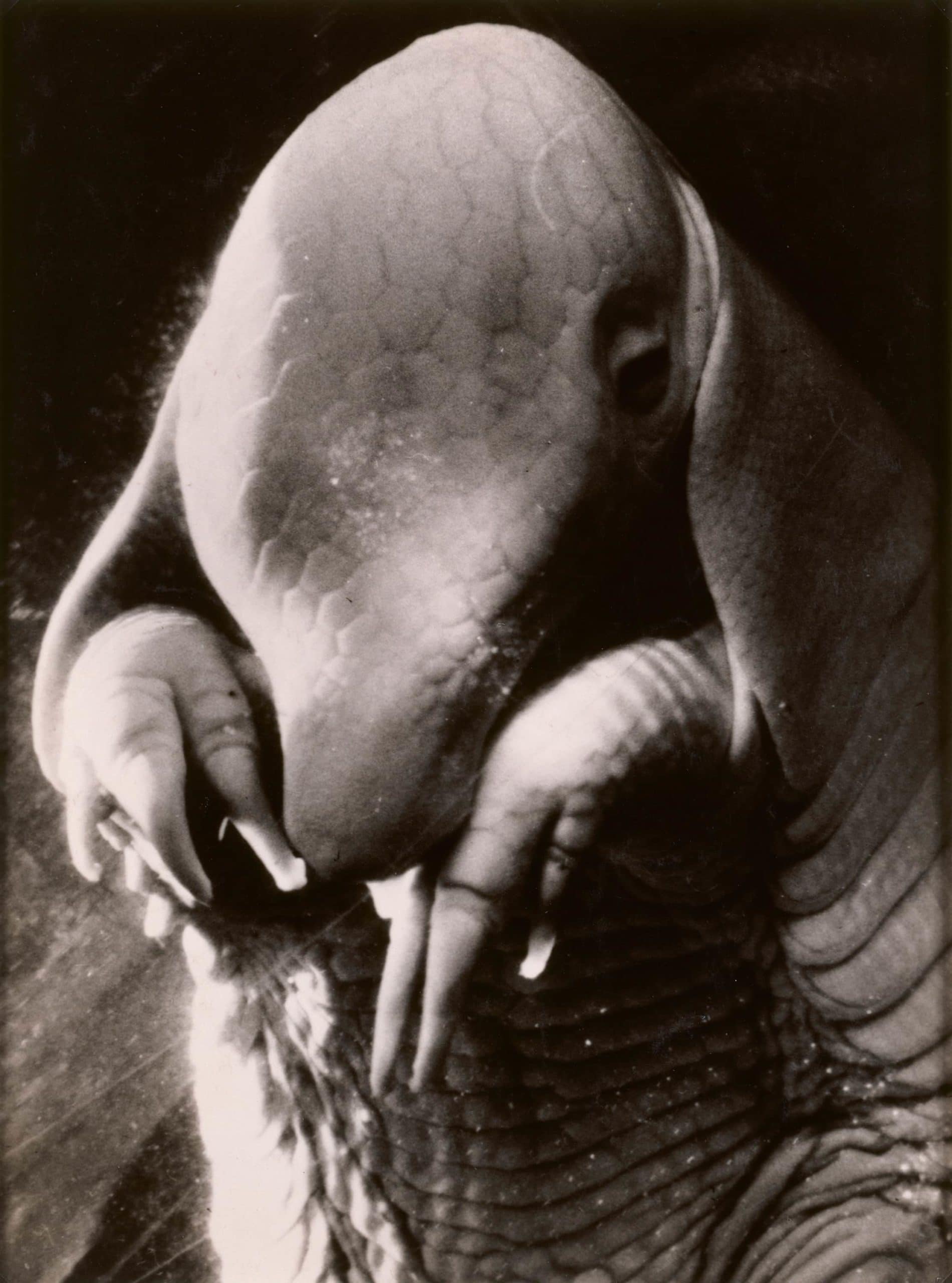
Dora Maar, 1907-1997, Portrait of Ubu 1936, Photographic, gelatin silver print, 240 x 180 mm, Centre Pompidou, Musée national d’art moderne, Paris Photo © Centre Pompidou, MNAM-CCI / P. Migeat / Dist. RMN-GP. © ADAGP, Paris and DACS, London 2019
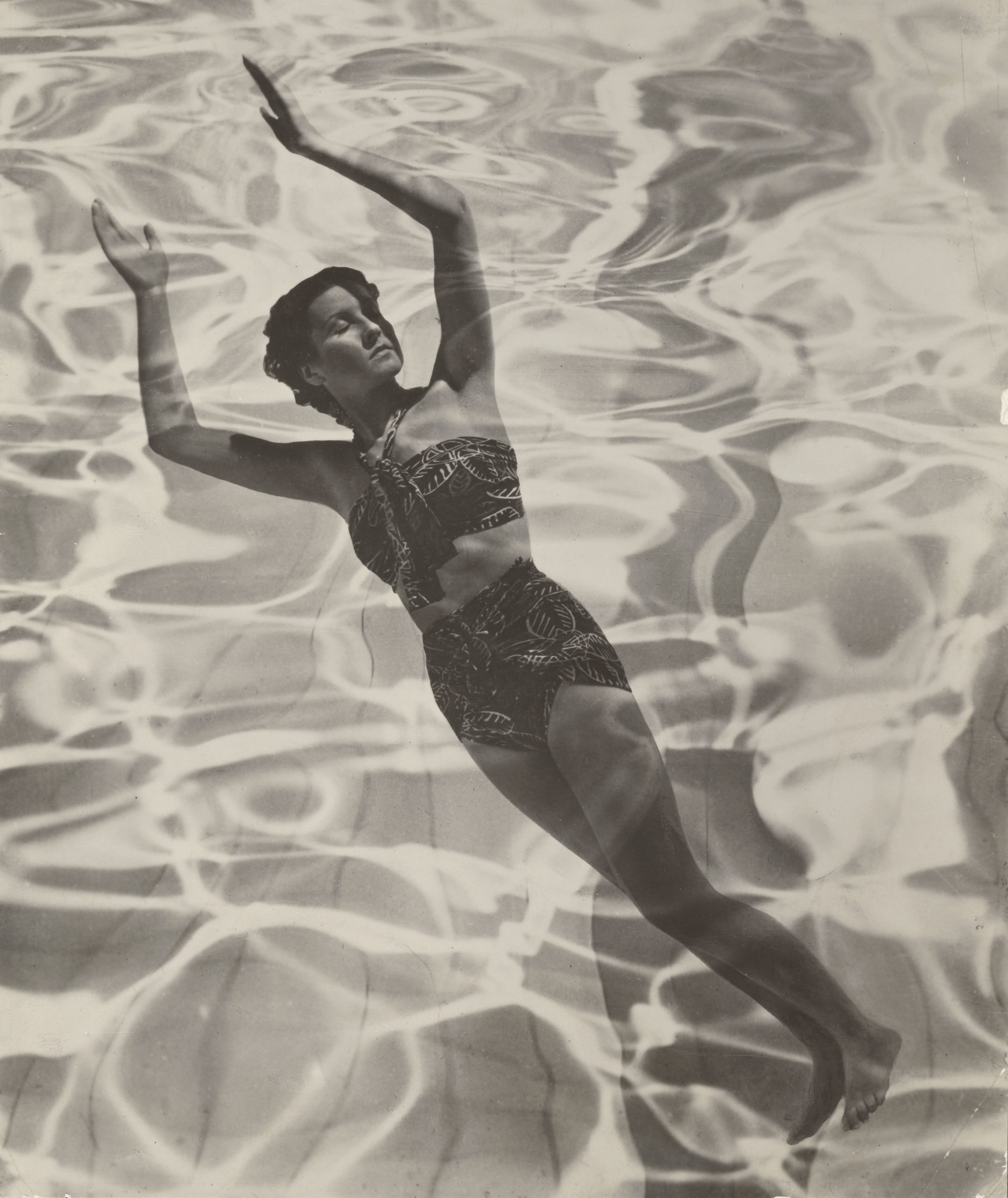
Dora Maar, 1907-1997, Model in Swimsuit 1936, Photograph, gelatin silver on paper, 197 x 167 mm, The J. Paul Getty Museum, Los Angeles. © ADAGP, Paris and DACS, London 2019
Maar’s career spanned decades, forms and movements, moving from documentary photography, to surrealism, and ending with a kind of minimalist abstraction, manipulating and deconstructing the forms that she’d used in the past.
Everything seemingly returns to an essence, her abstract landscapes and non-camera photography continually reaffirming what feels like Maar’s constant inventiveness, always breaking down and reconstructing the world around her into strange, exciting new configurations.
The Dora Maar exhibition is on at Tate Modern until 15th March. For more information, click here.


